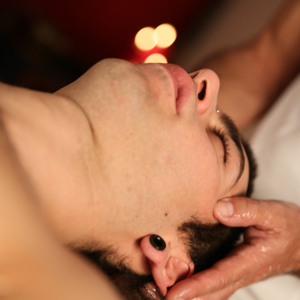
I use this method based on the “Sensate Focusing” developed by Masters and Johnson.
It is about exploring the levels of sensitivity in each area of the body where a lot of tensions tend to be stored, tension caused by traumatic experiences in our lives.
It is done by means of conscious touching and a constant communication between the therapist and the receiver.
Our sensory-motor system reacts constantly with muscular reflexes to daily tensions and traumas. These muscular contractions are completely involuntary. They give rise to stiffness, pain and a limited range of movement, and are more frequent and severe in the most sensitive and intimate areas of the body. We find and an example of this in vaginismus, a powerful tension of the vagina muscles which prevents penetration and in extreme cases, the insertion of tampons.
Another example of these tensions is be found in the anus, with symptoms like hemorrhoids, fissures or constipation as well as the impossibility of penetration. It is quite common both in women and men for this area to be completely unknown to them due to the prejudices we have about it. And this not only causes physical and emotional discomfort but also means that we miss options for feeling great pleasure.
In some cases the person has never experienced any sensations in the area so is totally unaware of it.
By means of mapping we can reestablish the neuromuscular connection with these most sensitive parts of the human body, to integrate them and bring them into harmony.
It can also be very useful with cases of injuries produced by childbirth or surgery.
Mapping to get to know our body
A mapping session can help us to detect:
- Tension and rigidity
- Insensitivity
- Post traumatic physical reactions
- Injuries produced by childbirth or surgery
- Vaginism
- Problems in the anus: tension, hemorrhoids, fissures, abscesses, nodules, coccyx deviation, etc.
The response of the body, emotions and mind to tactile stimulation provides us with very valuable information with we can follow up on during the session and in future sessions.




